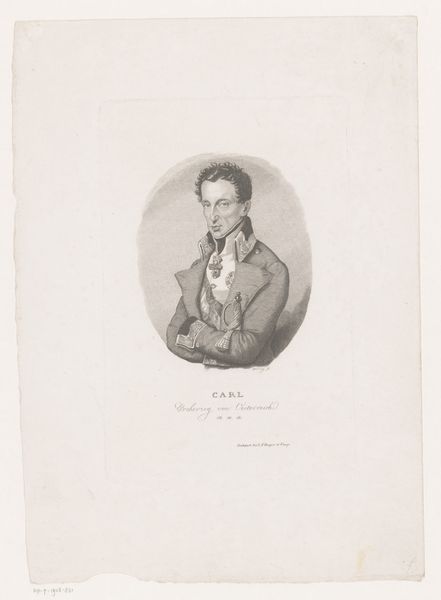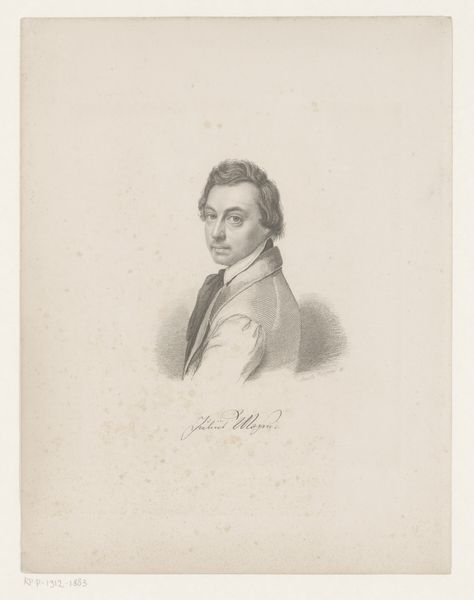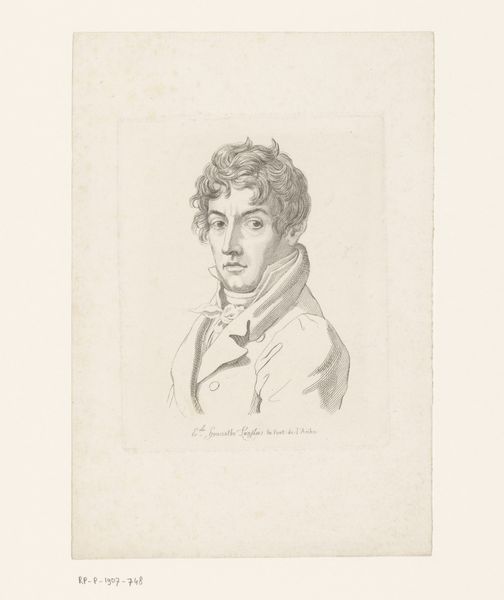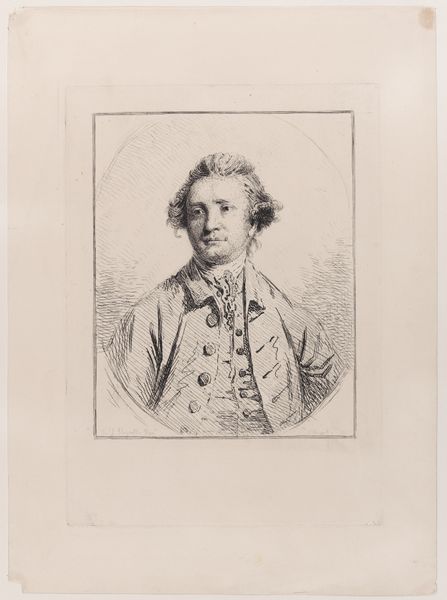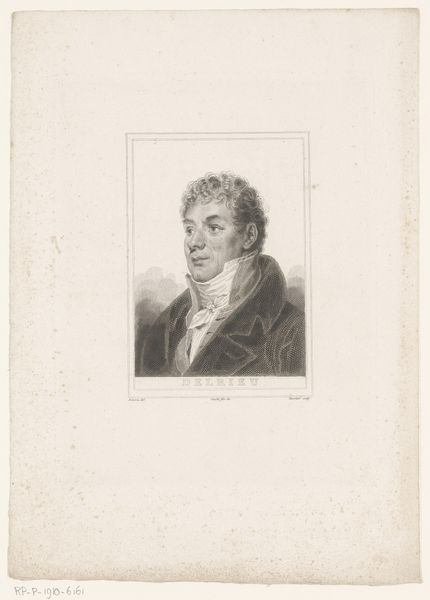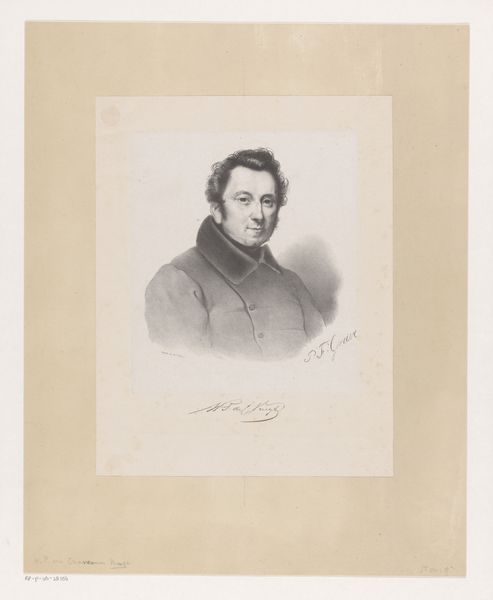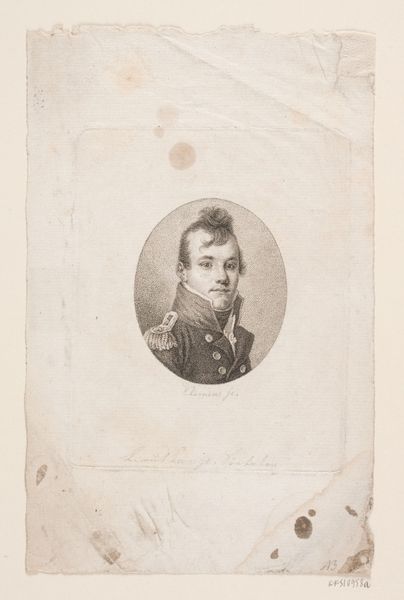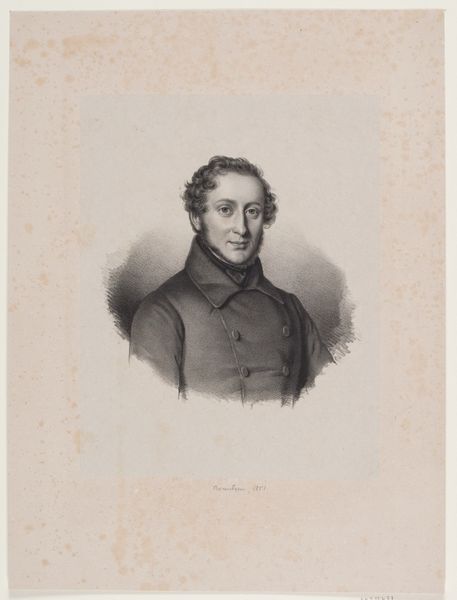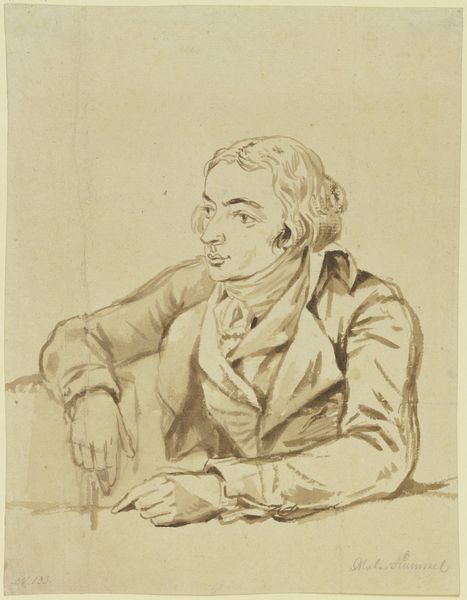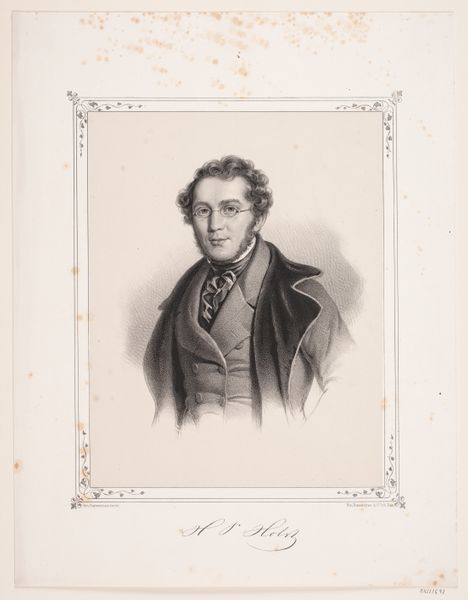
drawing, pencil
#
portrait
#
pencil drawn
#
drawing
#
pencil sketch
#
figuration
#
romanticism
#
pencil
Dimensions: height 195 mm, width 135 mm
Copyright: Rijks Museum: Open Domain
Jean Augustin Daiwaille created this portrait of a man, possibly a self-portrait, in the Netherlands using graphite. The detailed rendering, particularly in the face and hair, suggests the sitter's status and personality were important to the artist. This drawing likely comes from the first half of the 19th century, a period when portraiture served a crucial social function. In the absence of photography, portraits like this one immortalized individuals, reinforcing social hierarchies and solidifying family lineages. The Dutch, with their rich mercantile history, had long embraced portraiture as a means of displaying personal achievement and social standing. The Rijksmuseum, where this drawing now resides, began to collect such works at a time when national museums were defining a sense of cultural identity and artistic achievement. Understanding the role of institutions like the Rijksmuseum and the social function of portraiture helps us to appreciate the cultural work that this image performs. By looking at archival materials, we can start to understand the social conditions that shaped artistic production in the Netherlands at this time.
Comments
No comments
Be the first to comment and join the conversation on the ultimate creative platform.
